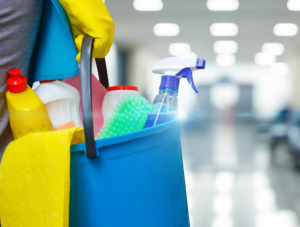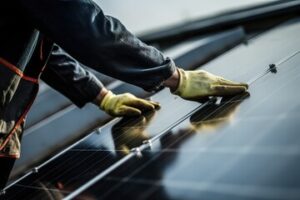When you need to go away, boarding your dog is an excellent option. It provides a safe, comfortable environment and allows you to travel or attend to family and business matters.

The first luxury dog boarding resorts started with pet owners who wanted more than basic shelter and food for their pets. These facilities evolved to include spa services, gourmet meals, and state-of-the-art accommodations. Read on Sierra Canine for more information.
Overnight dog boarding gives you the peace of mind to travel without worrying about leaving your pet behind. A professional overnight boarding service provides a safe and nurturing environment for your pet, ensuring that they get the attention and care they deserve while you’re away. They also offer a variety of services to ensure your pet’s comfort and safety. Choosing the right overnight boarding option for your pet requires careful consideration. You should consider the duration of your trip, your dog’s personality and temperament, and the facilities available. You should also check online reviews to understand what other pet owners have said about the boarding facility.
The staff at overnight boarding facilities are passionate about animals and will treat your dog like their own. They will make sure your dog is comfortable, gets plenty of exercise and playtime, and eats well. They will also keep you updated on how your pet is doing via text or email. If your dog has any special dietary needs, you should let the boarding facility know in advance.
Most overnight boarding services will take your dog on pack walks adventures during the day, which helps to burn excess energy and reduce boredom. This can help dogs that are more nervous or shy, and it’s a great way to socialize with other dogs. Dogs are very social animals, and it’s important for them to interact with other dogs and humans for their mental and physical health.
Overnight dog boarding can be a stressful experience for dogs, but it’s essential to find a caring and experienced caregiver. If you have any concerns about your dog’s comfort level, you should discuss them with the boarding facility before booking a stay. You can also leave them with a familiar toy or piece of clothing that smells like you, which can provide comfort and help ease separation anxiety. You should also give your dog clear instructions on feeding, exercise, and any medication requirements. It’s important to remain calm and positive during drop-off, so that your dog doesn’t become stressed out or anxious.
Day care
Whether you travel for business, work long hours, or take vacations often, dog boarding can help you feel confident that your dog is safe and cared for when you can’t be there. From traditional kennels to luxury dog hotels, there are many options for your pet to have fun and be happy while you’re away.
Most boarding facilities provide day care services as well. Day care allows your pet to interact with other dogs in a controlled environment and may also include structured playtime, walks, and personal attention from staff members. Having regular interaction with other animals is important for dogs and can help reduce separation anxiety while you’re away. Daycare also helps your dog build confidence and trust in humans.
When choosing a facility, ask about the safety measures they have in place. Reputable boarding facilities will have security fencing, cameras, and strict protocols for emergencies. They’ll also have experience caring for pets with medical needs. It’s also a good idea to visit the facility before you book a stay. This will allow you to assess the cleanliness and safety of the space, and give your dog a chance to become familiar with the staff and the environment.
Many boarding services provide a variety of additional options, such as dog spa treatment and birthday parties. These extras can make your dog’s stay more comfortable and stress-free, while also helping them get accustomed to the boarding experience.
Another option for pet boarding is to leave your dog with a local sitter or friend. This can be less expensive than a kennel and provides the comfort of a home environment. However, it’s crucial to find a reputable sitter with plenty of experience and a clean, safe home for your pet.
Grooming
Grooming is a necessary aspect of your dog’s health and wellbeing. During grooming, you can check your dog’s ears, eyes, mouth, paws, skin, coat, and legs for signs of illness or injury. This can help you catch and treat these issues before they become serious. In addition, grooming can also be a good bonding experience for you and your pet.
If you have a scared or aggressive pet, start by introducing them to the grooming process gradually. Use reward-based training to teach them to associate the grooming brush with positive things, like tasty dog treats. Start by patting them gently on different parts of their body and re-associating the brush with those positive feelings. Once they are comfortable, slowly move onto the ear and genital areas.
During grooming, you can also check your dog’s coat for any loose or tangled hair. If you notice any problems, you should seek veterinary care immediately. This can prevent more severe conditions, such as bacterial infections and parasites. Keeping your pet well-groomed can also improve their mood and behavior, as they are more pleasant to be around. In fact, a clean and groomed pet can even increase their lifespan. Consequently, it is important to take your pet for regular grooming sessions, whether you are at home or in a professional dog spa.
Training
A dog boarding facility should have an experienced staff that understands the unique needs of each pet and how to care for them. This will give you peace of mind that your pet is in good hands while you’re away. The best facility will provide a comfortable home-like environment for your dog, and a friendly staff to make them feel at ease. They should also have a veterinarian on staff, in case of any emergencies.
Boarding facilities can range from traditional kennels to luxury dog hotels. The latter offer a full range of services, including grooming and spa treatments. They also have dedicated play areas for dogs to socialize and exercise. They may also have a training program for dogs, and can help owners with basic obedience training. These programs are an excellent way to train your dog while you’re on vacation, or even for a quick trip to the store.
When choosing a dog boarding facility, look for one that offers crate-free boarding. Crate-free boarding allows your dog to sleep comfortably in a large, open space. These facilities are also typically well-lit and clean. They will also be staffed by experienced caregivers who are trained to handle all types of medical problems. Before leaving your dog at a kennel, visit the facility and tour their living quarters to ensure that it’s safe and healthy.
Some boarding facilities offer in-home boarding, where your dog will be left with a sitter who lives in their own home. This type of boarding can be particularly helpful for pets who are nervous about staying in unfamiliar surroundings. This type of boarding can be more expensive than a facility, but it’s worth the extra cost for peace of mind.
In-home boarding can also be a good option for dogs with special needs, such as those with mobility issues or anxiety disorders. In-home boarding can also be more convenient for busy pet owners who don’t have time to travel far.








